With the launch of our 2019 touring exhibition Discovering Ancient Egypt as part of the Ancient Egypt and East Asia National Programme, here’s a sneak peek at our new outreach learning resources accompanying the touring exhibition across Scotland.
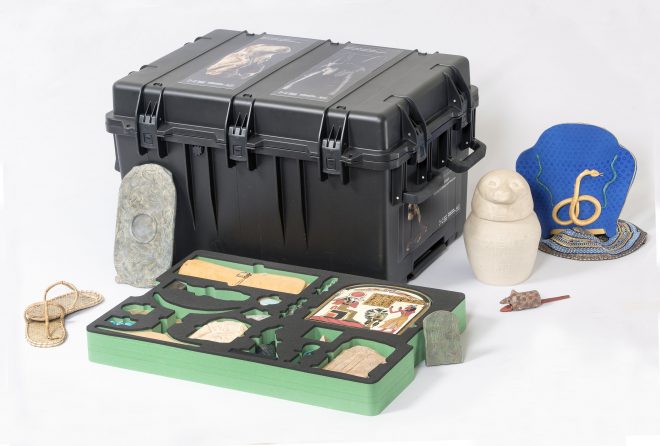
If you take a look at my internet search history over the past ten months, you may have some questions – quite rightly so – about my job. Google has been asked some pretty interesting things, for example, ‘do giant crocodile pop-up tunnels exist?’ (which, in case you were wondering, they do). Or perhaps even more obscurely, ‘suppliers of theatrical anatomy props, removable organs’.
Well, until this point at least, my search history was only known by me. But my colleagues have also had the delight of getting a window on my working world with the arrival of numerous shapes and sizes of packages to my desk. My managers have also received some intriguing finance paperwork (leading to questions along the lines of “can you tell me how you’ve worked plush hippopotamuses into your budget?” Which, in case you’re wondering, I can also fully explain.
Over the past ten months, I’ve been working with our museum partners across our Ancient Egypt and East Asia National Programme network to develop an exciting suite of new learning resources to accompany our 2019 touring exhibition Discovering Ancient Egypt. This exhibition will be touring Scotland in the Scottish Borders (Hawick Museum), Angus (Montrose Museum) and East Ayrshire (The Baird Institute, Cumnock) throughout 2019, engaging and inspiring people with national and local ancient Egyptian collections.
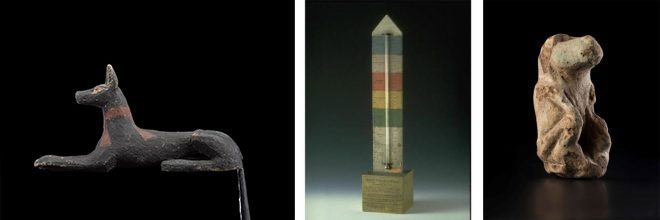
Discovering Ancient Egypt explores Scotland’s contributions to Egyptology through the lenses of three key people; Alexander Henry Rhind, Charles Piazzi Smyth and Annie Pirie Quibell. The exhibition tells stories and showcases items from Scotland’s national and local collections, displaying items from National Museums Scotland’s collections as well as items from the local ancient Egyptian collections in Hawick, Montrose and East Ayrshire. This provides a local twist to the exhibition in each venue, and provides the opportunity for local communities to discover ancient Egypt in their local museum.
I’ve been working with our museum partners to develop exciting programme plans for school pupils, families, community groups and adults to complement the install of the touring exhibition. To help with this, together – with the support of primary school teachers, additional support need practitioners, community groups and families – we have developed a suite of new outreach resources which complement the touring exhibition, providing visitors with new opportunities to engage with museum collections and stories in exciting ways.
Accompanying the touring exhibition is a suite of more than fifty engagement tools to connect visitors to ancient Egypt. This includes real and replica handling objects, illustrated works, an exhibition discovery trail, dressing-up costumes, a large floor map of Egypt, craft activities, as well as tools to help improve the accessibility of the exhibition and learning experiences for autistic children and young people.
The handling objects included in the resources are split into the themes of everyday life, mummification and the afterlife and Scotland’s contributions to Egyptology. Ten of the objects included in the handling collection are real ancient Egyptian artefacts, with a further thirty objects being replicas of accessioned items in Scottish or international collections.
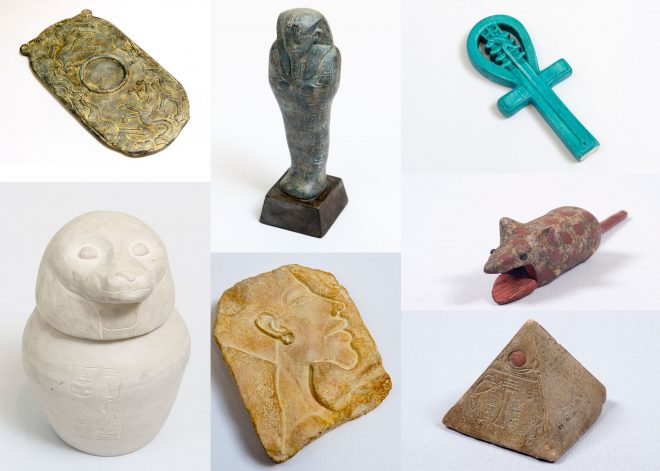
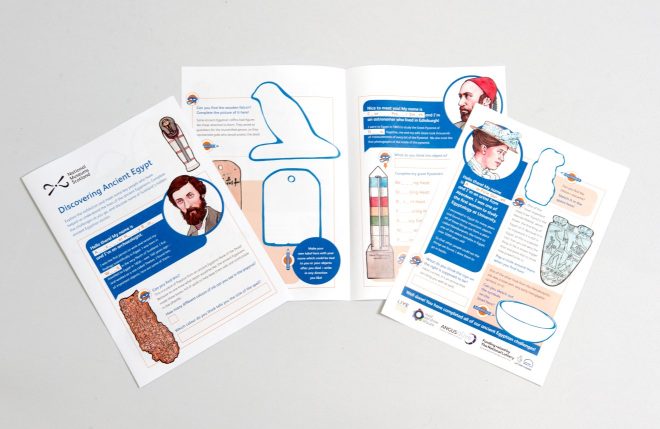

To complement the exhibition, museum partners will also receive resources to create ‘pop-up programme’ spaces within galleries, including a large floor map of Egypt.
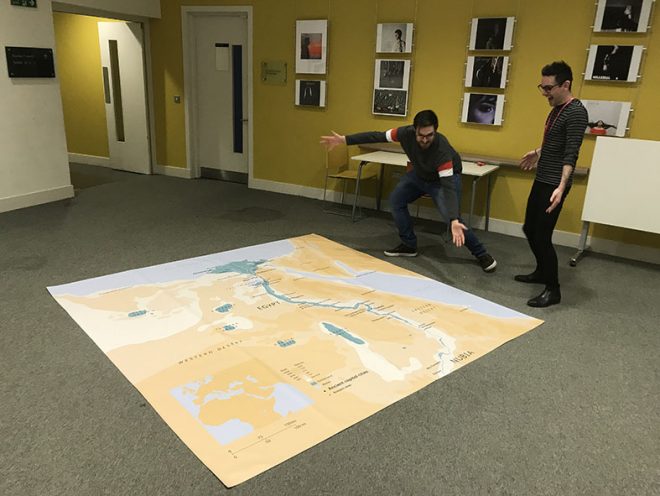
As part of the Revealing Stories element of our National Programme work, we’re working to make ancient Egyptian collections across Scotland more accessible to children and young people with autism and their families. As part of these efforts, we’re coordinating the delivery of dedicated training in autism awareness to museum practitioners throughout Scotland, and providing opportunities for museums to share best practice and learn from each other through networking events. We have also developed a set of tools to help improve the accessibility of the touring exhibition and learning experiences, including developing two new sensory backpacks and ancient Egyptian themed communication cards, which will be available as the exhibition tours Scotland and to museums via our online resource hub.
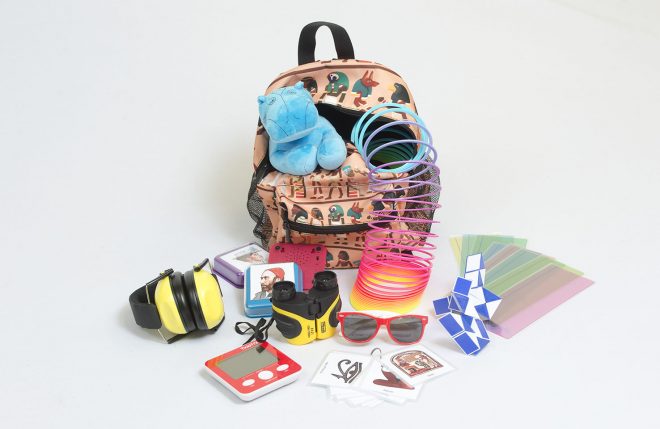
The Ancient Egypt and East Asian National Programme is a multi-departmental project for National Museums Scotland, bringing together and developing the skills and expertise of our teams as well as those of colleagues in partner museums from across Scotland. For more information on our national reach and impact, you can explore our National Strategy online.
So, that’s some of what I’ve been up to across the past ten months, and I can’t wait to see the resources in action across Scotland. Now the question is, did you spot the plush hippo?
The Ancient Egypt and East Asia National Programme has been made possible thanks to the generous support of the National Lottery Heritage Fund. Revealing Stories has been made possible thanks to the Collections Fund, delivered by the Museums Association.

